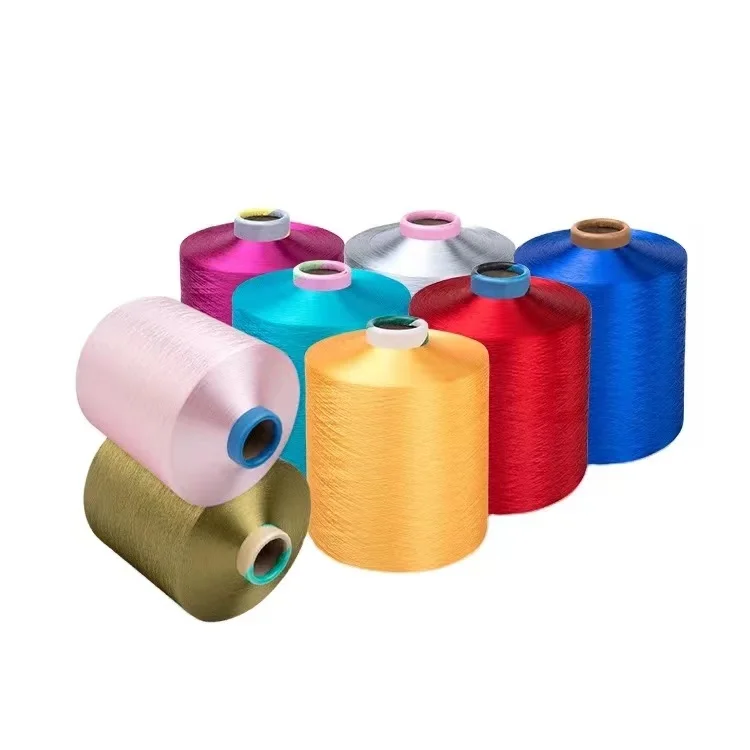Polyester yarn from WELONG is in fact thread, and when you need to sew heavy fabrics that surpass the strength of your average cotton polyester or silk seams this is the kind of string lighting. This is a very precious kind of yarn that can be used in clothing, textiles and many other things we use on a daily basis. This you get to know in this post where we will define what polyester yarn is, its benefits and the process involved when making it. It is only in understanding these processes that we can begin to appreciate the labour- and resource-intensive effort required for the production of this vital raw material.
What is Polyester Yarn?
A difficult, waterproof string is effortlessly made utilizing presumably the non-regular material available to make threads. This not just yarn we keep seeing plenty of it even in our daily clothes or curtain beside us. And not that Polyester yarn can't be found in a lot of other stuff-it's so flexible it goes pretty much anywhere, also T-shirts and shorts as well as outdoor gear like tents or backpacks.

How is Polyester Yarn Made?
Polyester yarn making include some important steps that is done. Understanding how we arrived at yarn like this involves us breaking down the process step-by-slow-step " So let's examine each step with a beady eye.
Step 1: Things that are material to You
In the effort to create different Types of polyester yarn, what happens first is they ensure that they are using fine materials of highest quality part and composite this with another substance. These materials are usually made of synthetic-fiber strands drawn tight (artificial) and selected for their strength when pulled into a bundle. The company says it can actually feel yarn-like, which has a lot to do with the quality of materials used in it.
Step 2: Preparing the Fibers
After fibers come they need to be washed so that these can undergo with new processed. Preparation is washing off the fibers so that all dust and other foreign particles have been removed from it, afterwards passing through carding (combing with fine small teeth) to straighten them up before spinning. It is an absolute must in the process to make sure that outtake yarn will be perfect and smooth.
Step 3: Spinning the Yarn
These fibers are twisted together to make yarns. The spinning is far more important as this will dictate how strong and thin your yarn could go. The machines spin the faster fibers into yarn which is durable and can be used for many different things. Spinning is an art that requires a great deal of talent and a good ability to ensure the quality creating yarn.
Step 4: Winding the Yarn
The yarn is then spooled onto bobbins post production. These machines take up coil-winding areas wind the yarn on it to maintain them in an orderly manner right away. Well-bundled yarn is easier to handle when it comes time for the next project.
Step 5: Finishing the Yarn
The yarn, in turn is finished during the last step of manufacturing process that might involve a series of variety different processes resulting combination and arrangement depending on desired pattern construction this meant washing it again - to make sure that is clean and ready. After yarn is made, it likewise goes through a finish to improve its properties even additional and make certain that the end-product will be resilient enough for numerous uses. You serious but why be seriously made in the manner of polyester yarn.
Polyester yarn is an incredibly strong material that has roles in everything from clothing and upholstery, to outdoor gear. The best thing about this polyester yarn is its chemical and environmental resistance nature. That renders the molybdenum a strong option for tough hats to crack jobs where lower grade components will let you down. Polyester yarn is considered as the modern and very useful option for many markets-from clothing to outdoor equipment.
Innovative Methods in Polyester Yarn Making
We live in an era where the pressure is always on to make polyester yarn faster and more easily. Few of the counter mechanisms were proposed to offer solutions for combating these types of new attacks and few are as follows:
Air Jet Spinning Air jet spinning is the process that help air to twist fibers together and produce strong one so less chances for threadbare, physical damage. The technique is an innovative and useful approach in improving the yarn quality.
Continuous Filament Yarn: This process makes section long filament spun into yarn as a continuous whole. Resulting in a softer and fuller yarn than typical wool after it has been further processed into the final product.
Replaced by computer control: In many companies today they have been replaced with computers who monitor closely the entire production. This ensures that the yarn is overall ok and meets quality standards in production.

 EN
EN
 AR
AR
 PT
PT
 RU
RU
 ES
ES
 ID
ID
 VI
VI
999999/images/share.png)
